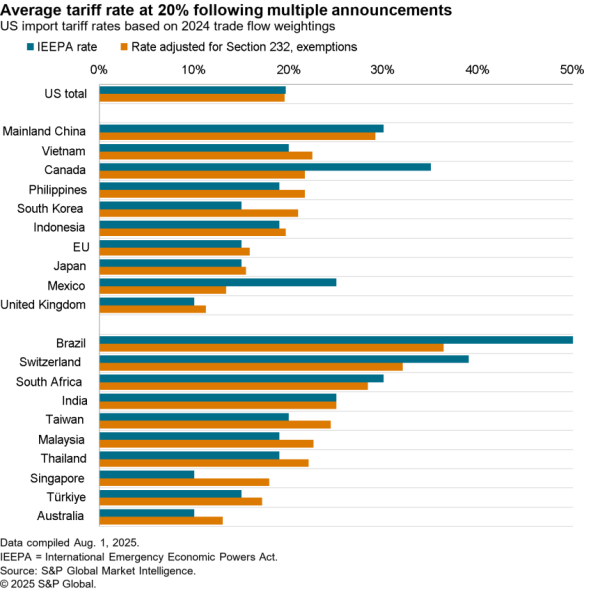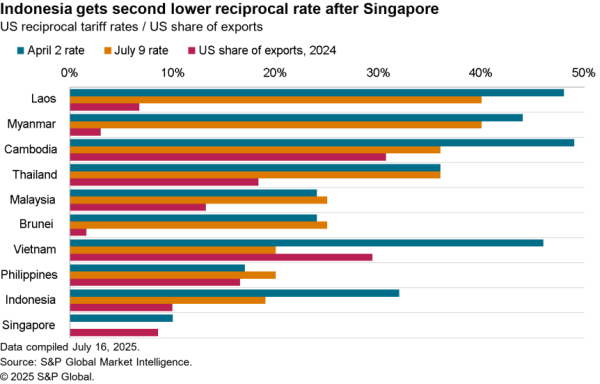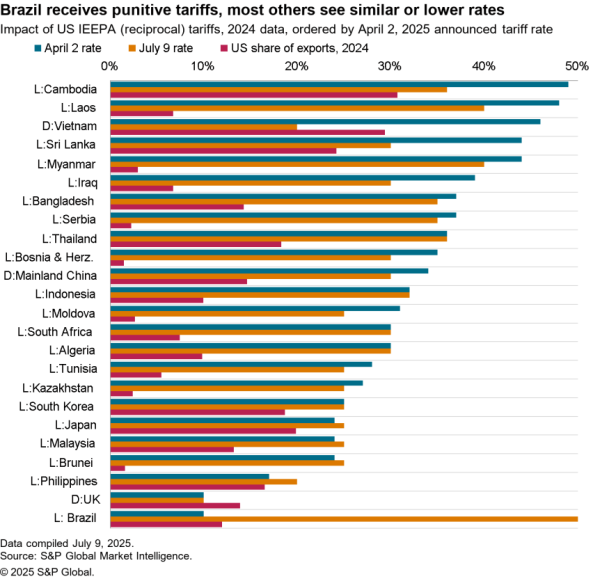Panjiva Research attended the FT Finastra World Trade Symposium in London on Dec. 5. This report covers key points covered in four of the panels at the conference by speakers – who are not identified – as well as related data-driven insights. More details regarding the event and the agenda can be found from the event’s official website.
Open Markets – Is free trade always a good thing?
The future of the WTO was at the center of the debate, with a broad consensus that reform is needed to ensure it is still fit for purpose in the future – particularly in a world of changing trade deals such as those caused by Brexit or the trade conflict between the U.S. and China.
The U.S. for its part has felt it has led the way in promoting change at the WTO such as the proposed new notifications process being brought with the EU and Japan to address the lack of transparency in many countries’ trading arrangements. For its part the U.S. also has significant questions about the process of self-designation as a developing economy, and especially as regards China but also other parties, that need to be addressed.
China’s expansion as a trading power has been enabled by the WTO, with the U.S. now attempting to address what the current administration sees as being over a decade of inaction in addressing how it engages multilateral.
The tie-in between currency manipulation and trade rules was also highlighted as a challenge, and one reason why many modern trade deals specifically include currency rules within their texts.
The session ended on a somewhat dark note though with the comment that should the U.S. lose its section 232 (national security) appeals regarding steel and aluminum it would call into question its participation in the WTO.
Data insight: The need for WTO reform has become more urgent as a result of the surge in protectionist measures being taken in particular by the U.S. Panjiva analysis of WTO filings shows that the number of trade enhancing and trade restricting measures among the OECD were in balance in the 12 months to Oct. 31 vs. a year earlier. That’s the first time there hasn’t been a net reduction in restrictive measure since 2013.

Source: Panjiva
Open trade needs open platforms
The historic rules governing global trade have not kept up with modern international trade practices – for example the basic WTO rules have not been updated since before the internet was introduced. It is therefore generally poorly designed to balance the needs of the digital economy from a global perspective with the implementation of domestic policy on topics such as data privacy.
Technology can help small and medium sized enterprises find new customers globally, and even for those who are not exporters they will increasingly be a part of globalized supply chains. Finding the right level of regulation is vital in ensuring SME innovation isn’t stifled – for example personal data should be protected more strictly than internet-of-things data.
There was a consensus that it is ok for different countries to have different rules on data protection, as long as they – and the underpinning technologies – are interoperable.
Data insight: There’s an incredibly long tail of small and medium enterprises engaged in global trade. Panjiva data shows that the top 80 U.S. consignees for seaborne containerized freight accounted for just 8.6% of imports in the 12 months to Oct. 31 while the there were a total 556,000 named consignees just for the past 12 months.

Source: Panjiva
Sustaining and communicating the value of collaborative trade
While much of the focus on multilateral trade action – for good and ill, effective and ineffective – as been on the World Trade Organization there are also plenty of examples of organic growth in collaborative trade systems.
The recent declaration by the leaders of the Commonwealth shows the potential to develop in areas of common interest, obviously with a focus on increased prosperity in the case of emerging economies. The WTO’s Trade Facilitation Agreement has been instrumental in allowing the creation of such mini-multilateral arrangements.
Similarly Canada’s promotion of WTO reform has drawn in other countries’ support, but has been driven by the centrality of trade to Canada’s economy – put another way there is already a sense of the societal importance of trade. Understanding the fairness or otherwise of trade can be delivered at the business level as much as at the political level.
There are still significant costs to carrying out international trade, and reducing friction can help greatly. One estimate indicated that the cost of international trade is equivalent to as much as 5% of the value of trade. A collaborative approach to setting even basic standards for e-commerce and shipping regulations can go a long way to improving the value of trade to everyone in society.
Data insight: A less open economy can find it easier to build walls against international trade while its citizens may question the value of trade if they are buyers of overseas products but not directly involved in export operations. The U.S. has become reliant on fewer countries for more of its trade in the past five years with the top eight export markets accounting for 59.7% of total exports in the 12 months to Oct. 31 compared to a trough of 56.8% in 2012.

Source: Panjiva
Trade disarmament – From the weaponization of global trade to the advancement of globalization
This panel discussion included Chris Rogers, Research Director for Panjiva at S&P Global Market Intelligence.
The use of militaristic language in relation to global trade has increased significantly in the past two years as the confrontation between the U.S. and China has become more serious and as populist movements such as Brexit have seized on trade as being “the bad guy” for many of society’s economic inequities. Many trade-related policy decisions are hugely complicated in nature, and often based in opinion not fact, resulting in a separation between policy-makers, policy-implementers in the form of corporations and the voters / consumers affected by those policies.
That in turn has led politicians towards a more mercurial approach towards trade policy which – alongside tit-for-tat tariffs and the uncertainties of post-Brexit trading arrangements – has led corporations to reduce investment and retain profits due to uncertainty which has exacerbated a sense of global trade’s benefits accruing to the few not the many.
Ironically the increasing uncertainty driven in particular by the U.S.-China trade war is leading companies to accelerate existing business trends towards localization – mediated by technologies including industrial robotics and 3D printing – and the continuing chase for lower costs by shifting production to different countries.
Yet, it is easy to be overly focused on the negatives – many new free trade deals have been signed and others modernized in just the past 12 months indicating that there is still a global willingness to engage rather than confront on trade.
Data insight: Global trade has continued to thrive despite the current policy gloom. Indeed global trade volumes reached their highest since at least January 2000 just in August this year, Panjiva analysis of CPB World Monitor data shows. There’s been year-over-year expansion in 105 of the past 107 months since the end of the Great Recession. That development has been far from equal though – a factor that needs to be addressed in order for a widespread consensus that globalization is worth pursuing to continue. For example, emerging markets in Africa have seen growth in just 60 of the past 107 months while in Central and Eastern Europe growth has occurred in 69 of 107 months.

Source: Panjiva




